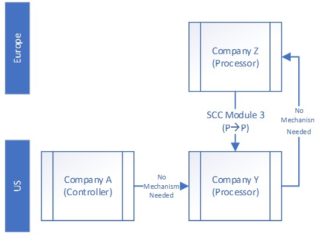The following is part of Greenberg Traurig’s ongoing series analyzing cross-border data transfers in light of the new Standard Contractual Clauses approved by the European Commission in June 2021.
Data Subject (EEA) → Processor Z-1 (non-EEA) → Processor Z-2 (EEA) → Controller A (EEA)
| Visual | Description and Implications |
| Background. Company A retains Company Z-2 | |















